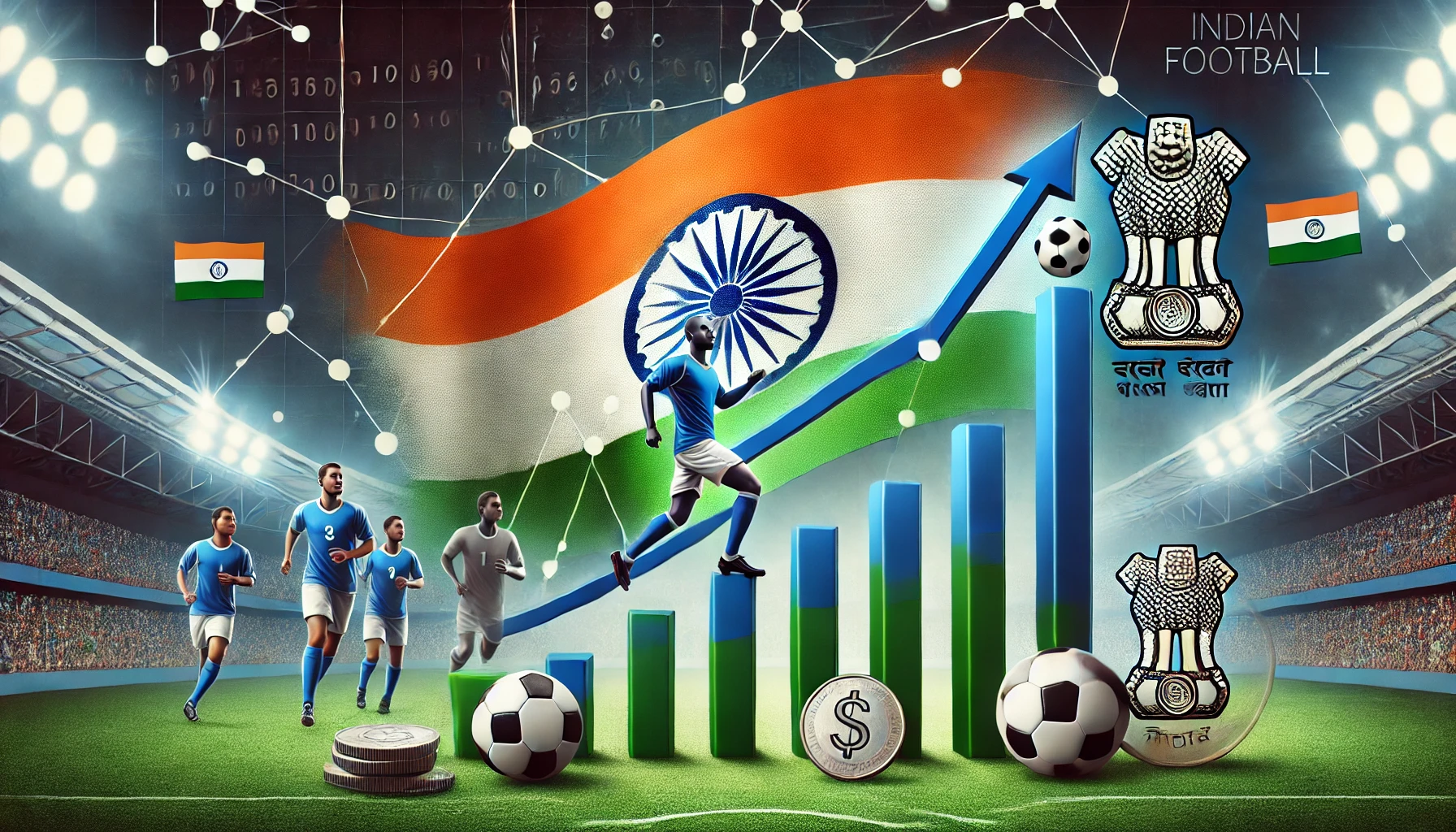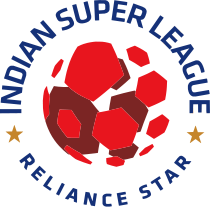
Football in India has historically played second fiddle to cricket, the nation’s most beloved sport. However, in recent years, the football landscape in India has undergone a transformative change, fueled by strategic investments and growing sponsorships. This feature explores the business side of Indian football, focusing on sponsorships and investments, while highlighting key data points and financial numbers to provide a comprehensive view of the industry’s evolution.
The Rise of Indian Football
The resurgence of football in India can be attributed to several factors, including the establishment of the Indian Super League (ISL) in 2014, which brought a new level of professionalism and visibility to the sport. The ISL’s franchise-based model attracted significant investments from both domestic and international entities, aiming to tap into the potential of one of the world’s most populous nations.
Key Sponsorship Deals
Sponsorships have played a pivotal role in the growth of Indian football. Major corporations have recognized the sport’s potential to reach a vast and diverse audience. Some notable sponsorship deals include:
- Hero MotoCorp: The title sponsor of the ISL since its inception, Hero MotoCorp reportedly pays around INR 50 crore annually. This partnership has been instrumental in establishing the ISL as a premier football league in India.
- Apollo Tyres: In 2019, Apollo Tyres signed a multi-year deal with Manchester United to become their official tyre partner for India, the Middle East, and Africa. While the exact financial details remain undisclosed, such partnerships underscore the growing interest of global brands in Indian football.
- Tata Group: Tata Group’s Tata Tea and Tata Motors have been significant sponsors of various football initiatives, including grassroots development programs and team sponsorships. Their involvement highlights the strategic importance of aligning with football’s expanding reach.
Broadcasting Rights and Revenue
Broadcasting rights have become a substantial revenue stream for Indian football. The ISL’s broadcasting rights are held by Star India, a subsidiary of The Walt Disney Company. Star India reportedly pays around INR 200 crore annually for the rights. This partnership has ensured extensive coverage, making football accessible to millions of viewers across the country.
Reliance Jio, through its subsidiary Viacom18, acquired the media rights for the Indian Super League (ISL) for the 2023-24 season. This acquisition was part of a larger deal worth around INR 550 crore for the ISL media rights. This move has allowed Jio to stream the ISL matches live on its platform, JioCinema, significantly enhancing the league’s reach and viewership across India
Investments in Clubs
Investments in football clubs have seen a notable increase, with both domestic and international investors keen to capitalize on the sport’s growing popularity. Key examples include:
- City Football Group (CFG): In 2019, CFG, the owners of Manchester City, acquired a 65% stake in Mumbai City FC. This investment marked CFG’s first foray into Indian football, emphasizing their belief in the market’s potential. While the exact financial details remain undisclosed, such strategic investments are expected to boost the club’s infrastructure and performance.
- JSW Group: The JSW Group, through its sports division JSW Sports, owns Bengaluru FC. Established in 2013, Bengaluru FC has emerged as one of the most successful clubs in Indian football, winning multiple domestic titles. JSW’s investment has been pivotal in developing the club’s state-of-the-art facilities and nurturing local talent.
- Mohun Bagan: The merger of ATK and Mohun Bagan in 2020 created one of the most formidable clubs in Indian football. The RPSG Group, owners of ATK, have committed substantial investments to ensure the club’s competitiveness both domestically and internationally.
Grassroots Development
Investments in grassroots development are crucial for the long-term sustainability of football in India. Various initiatives have been launched to nurture young talent and provide them with opportunities to excel. Some noteworthy programs include:
- Reliance Foundation Youth Sports (RFYS): Launched in 2016, RFYS aims to develop a comprehensive sports ecosystem in India. The program has reached over 2 million children across the country, providing them with access to quality training and competitive platforms.
- AIFF Grassroots Development Program: The All India Football Federation (AIFF) has been proactive in promoting grassroots development through various initiatives, including the Baby Leagues, which cater to children aged 6-12. These programs are designed to identify and nurture talent from a young age.
Financial Challenges and Opportunities
Despite the positive momentum, Indian football faces several financial challenges. Clubs often struggle with profitability due to high operational costs and limited revenue streams. However, there are significant opportunities for growth:
- Sponsorship Growth: As the popularity of football continues to rise, more brands are likely to invest in sponsorships. Innovative marketing strategies and engaging fan experiences can attract additional sponsors and boost revenue.
- Merchandising: Developing a robust merchandising strategy can create new revenue streams for clubs. Selling official merchandise, including jerseys, accessories, and memorabilia, can enhance fan engagement and generate significant income.
- Stadium Development: Investing in modern stadium infrastructure can enhance the matchday experience for fans and attract larger crowds. Improved facilities can also open up avenues for hosting international matches and events, further boosting revenue.
Government Initiatives
The Indian government has recognized the potential of football to contribute to the country’s sports ecosystem and has launched several initiatives to support its growth:
- Khelo India: The Khelo India program, launched in 2018, aims to promote sports at the grassroots level. Football is a key component of this initiative, with substantial funding allocated for talent identification, training, and infrastructure development.
- FIFA U-17 World Cup 2017: Hosting the FIFA U-17 World Cup in 2017 was a significant milestone for Indian football. The tournament not only showcased India’s ability to host international events but also provided a platform for young Indian players to gain exposure on the global stage.
Future of Indian Football Investments
As of 2024, the total investment in Indian football has seen significant growth, estimated to have increased tenfold over the past decade. This growth encompasses investments in infrastructure, media support, and grassroots development. For instance, the establishment of the Indian Super League (ISL) has been a key driver, attracting substantial investments from corporate sponsors and football conglomerates.
City Football Group’s investment in Mumbai City FC and other similar investments highlight the strategic interest in India’s burgeoning football market. These investments aim to develop the sport’s infrastructure, enhance talent development, and create a commercially viable football ecosystem in India.
In financial terms, it’s estimated that investments in Indian football have reached several hundred crores annually, with significant contributions from major sponsors and international football organizations. This figure reflects the combined efforts to elevate Indian football’s profile both domestically and on the international stage.
ISL Club Valuation (2024)
| Club | Valuation |
| Mumbai City FC | ₹48.2 Cr |
| Mohun Bagan FC | ₹65 Cr |
| East Bengal FC | ₹43 Cr |
| Kerala Blasters FC | ₹50.4 Cr |
| Hyderabad FC | ₹12.8 Cr |
| Chennaiyan FC | ₹34.9 Cr |
| Punjab FC | ₹22.3 Cr |
| Mohammedan SC | ₹19.6 Cr |
| Bengaluru FC | ₹34.6 Cr |
| FC Goa | ₹42.7 Cr |
| Jamshedpur FC | ₹27.8 Cr |
| Northeast United FC | ₹34.1 Cr |
| Odisha FC | ₹34.3 Cr |
I League Clubs Valuation (2024)
| Club | Valuation |
| Aizawl FC | ₹10.1 Cr |
| Churchill Brothers FC | ₹12.8 Cr |
| Delhi FC | ₹10.6 Cr |
| Dempo SC | ₹19.8 L |
| Gokulam Kerala FC | ₹14.7 Cr |
| Inter Kashi | ₹17.5 Cr |
| Namdhari FC | ₹12 Cr |
| Rajasthan United FC | ₹11.4 Cr |
| Real Kashmir FC | ₹9 Cr |
| Shillong Lajong FC | ₹13.6 Cr |
| Sreenidhi Deccan FC | ₹19.7 Cr |
| SC Bengaluru | ₹4 Cr |
Conclusion
The business of football in India is on an upward trajectory, driven by strategic investments and growing sponsorships. While challenges remain, the sport’s increasing popularity presents significant opportunities for revenue growth and development. With continued support from stakeholders, including corporate sponsors, investors, and the government, Indian football is poised for a bright future, potentially emerging as a major player in the global football arena.

- Punjab FC 2-0 Hyderabad FC: Detailed Match Report – Match 13
- Mohun Bagan SG vs NorthEast United FC: Detailed Match Report – Match 12
- Kerala Blasters Stage Dramatic Comeback to Beat East Bengal 2-1 in ISL 2024-25 Thriller – Match 11
- Mohammedan SC Denied Historic Win as Armando Sadiku’s Late Goal Rescues FC Goa in a 1-1 Draw – Match 10
- Jamshedpur FC Edges Mumbai City FC 3-2 in a Thrilling ISL 2024-25 Encounter – Match 9


Football Match Reports
Punjab FC 2-0 Hyderabad FC: Detailed Match Report – Match 13

Football Match Reports
Mohun Bagan SG vs NorthEast United FC: Detailed Match Report – Match 12

Football Match Reports
Jamshedpur FC Edges Mumbai City FC 3-2 in a Thrilling ISL 2024-25 Encounter – Match 9


















How come Mohun Bagan is valuated so high. If we check on legacy and fans support , East Bangal is on top